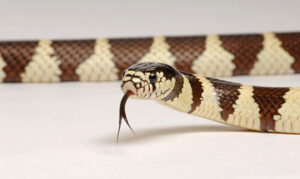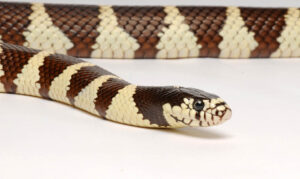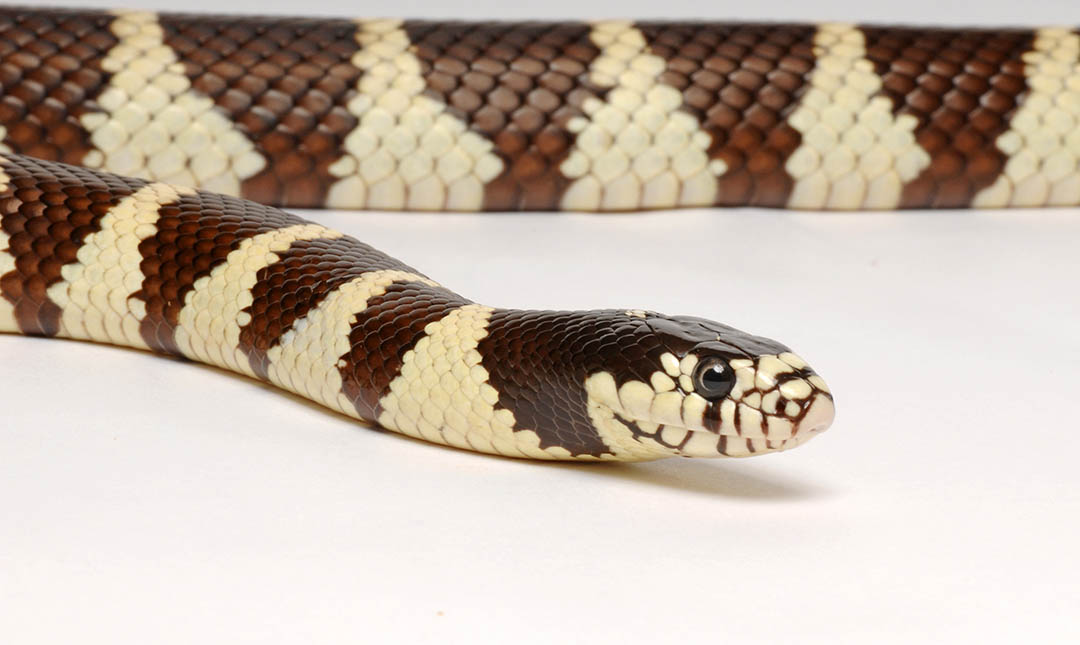About
Why are these snakes kings? These non-venomous snakes eat their competition for lunch. Kingsnakes specialize in hunting other snakes, including others of their kind. They will even eat rattlesnakes and are highly resistant to rattlesnake venom. They also consume mice and rats, doing their share to keep the rodent population in check. As constrictors, California kingsnakes dispatch their prey by coiling tightly around it. Snakes have flexible jaws that are loosely hinged and stretch to open very wide, which allows them to consume prey larger than their own heads. Prey is swallowed whole, headfirst.
California kingsnakes are generally active by day in spring and fall when the temperatures are comfortable, but during the hot summer months they are most active at night. They spend most of their time on the ground, but they are excellent at climbing trees and can also swim. When threatened, they will hiss and emit a strong musky odor while vibrating their tails in leaf litter, creating a sound that mimics a rattlesnake. They shed their skins four to six times a year, growing with each molt. During winter, these snakes conserve energy by entering a hibernation-like period called brumation during which their metabolism slows down and they become mostly inactive. During brumation kingsnakes do not eat or defecate, but they will wake up occasionally to drink water.


Status
There is no listing available for the common kingsnake by the International Union for Conservation of Nature. The common kingsnake includes several different subspecies, one of which is the California kingsnake.
Habitat
The largest populations of California kingsnakes are found in Southern California. This kingsnake can also be found in Arizona, New Mexico, southern Utah, Oregon, and northern Mexico. It prefers arid regions, typically residing in the desert but can also be found in grasslands and woodlands.
Diet
California kingsnakes typically eat small animals such as mice, rats, lizards, frogs, and other snakes.
Physical Characteristics
Hatchlings are typically about one foot long while adults can grow to be 2 to 5 feet long. Lifespan is estimated at 10-15 years.


